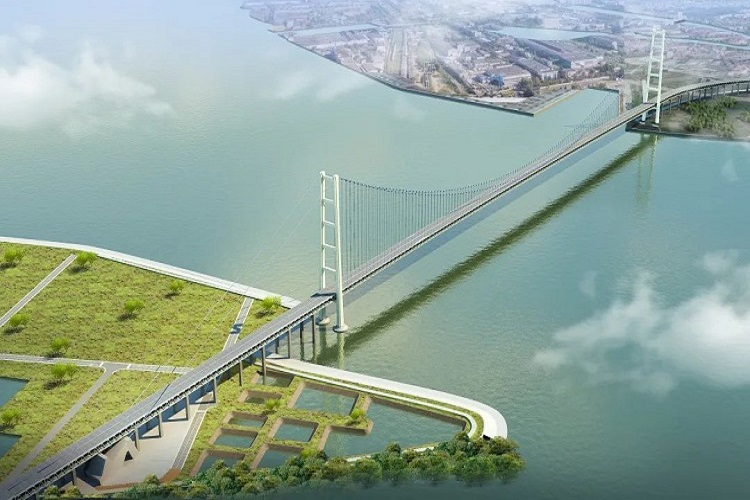The bridge with the longest span in the world—Zhangjiagang-Jingjiang-Rugao Yangtze River Bridge in Jiangsu Province
Recently, the first bored pile construction of the main tower of the bridge began, marking that major phased progress has been made and foundational construction of the bridge has been completed.
Connecting three cities including Zhangjiagang, Jingjiang, and Rugao, the bridge has two waterway spans in the south and north, three approach spans in the south, middle, and north, and eight lanes and a design speed of 100 kilometers per hour. The length of the south waterway span is 2,300 meters, making the bridge have the longest span in the world. The height of the main tower of the south waterway span is 350 meters, and after completion, it will become the highest suspension bridge tower. The bridge will be of great significance to the integrated development in the Yangtze River Delta region.
The double-decked suspension bridge with the longest span in the world—Shiziyang Channel in Guangdong Province
The main body construction has officially commenced. As the first double-decked river-crossing Channel, after completion, the Shiziyang Channel (Lion Ocean Link) will become a double-decked suspension bridge with the longest span and the highest main tower in the world.
Connecting Dagang Township, Nansha District, Guangzhou City and Humen Township, Dongguan City, the Channel locates between the Nansha Bridge and the Humen Bridge. With a total length of about 35 kilometers, the bridge has a river-crossing section reaching a length of about 12.5 kilometers. A total of 16 lanes on the double decks allow vehicles to be driven at a speed of 100 kilometers per hour.
As CCCC's another mega project following the Hong Kong-Zhuhai-Macao Bridge, the Nansha Bridge, the Lingdingyang Bridge of the Shenzhen-Zhongshan Link, and the Guangzhou-Zhongshan-Jiangmen Expressway, the project will play an important role in reducing the traffic burden of river-crossing in the Pearl River Estuary and improving the infrastructure connectivity in the Guangdong-Hong Kong-Macao Greater Bay Area.



